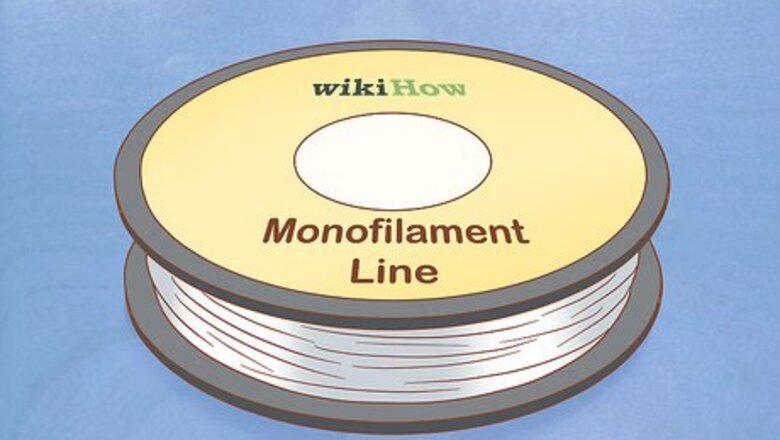
views
Choosing Your Line
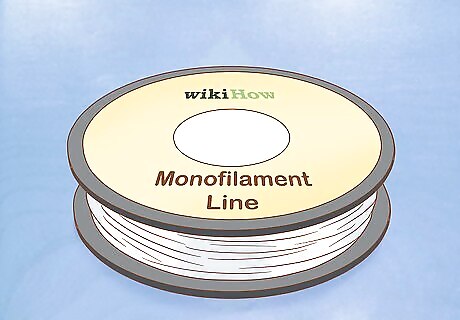
Use a monofilament line if you’ll be fishing with floating baits. Monofilament lines are single-strand lines that have quite a bit of stretch. The stretch adds to the flexibility of the line, helping the hook to stay secured in the fishes mouth. Mono lines also do well if you’re using a jig or live-bait.
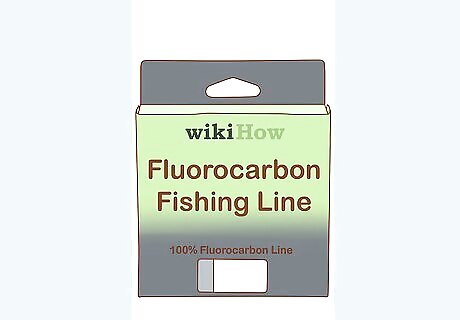
Pick fluorocarbon lines if you’ll be fishing in calm, shallow waters. These lines work very well because they are harder for fish to see underwater. Although they are similar to monofilament lines, they have less stretch and hold up better to abrasion. This line is also more reactive to light bites and bottom contact. Fluorocarbon lines are considered a type of monofilament line, so they are also great for fishing with jigs, live-bait, or in crystal clear waters.
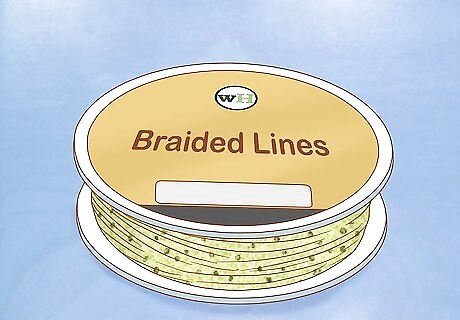
Choose braided lines if you’re bottom fishing. Braided lines are comprised of several lengths of braided synthetic material to create one line, which makes it great for creating a larger casting distance. This line provides better breaking strength and won’t stretch. The line is visible and it floats well, so be selective when using it. Because it sinks slowly, it goes great when using top-water baits.
Loading the Reel

Determine if the reel turns clockwise or counterclockwise. The easiest way to do this is to hold the reel the same way you would if you were actually fishing. Turn the wheel at least 2 to 3 times to determine if the reel turns clockwise or counterclockwise. This is the way the line will be spooled onto the reel; the opposite direction is the way the line will peel off the spool when you cast. Spinning reels are designed to hang down from the rod, not rest above it like spincasting and baitcasting reels are. To hold the reel properly when it’s not mounted on the rod, wrap the fingers of your casting hand around the mounting bar and let the reel hang from that hand while reeling with your other hand.

Open the bail by flipping the small handle up. The bail is a little wire handle that flips up and down to open and close it. Flip the bail up to open it and down to close it when you’re finished. If you notice any old fishing line on your spool, you should remove it at this time.
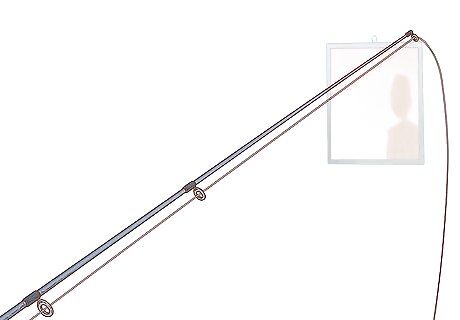
String your line straight through the guides and secure it. The guides are a series of small circles that line the bottom of the rod and keep the line in place. Use an arbor knot to secure the line to the spool. Cut any extra line with line cutters, and make sure that you leave at least a ⁄4 in (0.64 cm) of additional line from where you tied the knot. You can also use scissors to cut the line. To tie an arbor knot, wrap the line around the arbor and tie an overhead knot in the standing line. Tie a second overhead knot in the tag end, just about 1 in (2.5 cm) from the first overhead knot. Pull the standing line to slide the first knot down to the spool and slide the second knot down to the first.
Spooling Your Reel

Close the bail and place the spool on the floor. To make sure that the line enters the reel properly, lay the spool flat on the floor with the label facing up. Your spool should line up so that the line comes off of the spool the same way it will be going into the reel. If your line is twisted or the line doesn’t line up when the label side of the spool is facing up, flip it over. This will help avoid any problems with the line becoming twisted.

Pinch the line and slowly crank the reel. You should pinch the line lightly, about 12 in (30 cm) above the reel and pull it tight. Crank the reel slowly, about 20 times, and let the line slide through your pinched fingers. Stop cranking and allow your line some slack to inspect it for twists. If the line is twisting, strip some of the line back off of your reel and realign your spool and line. Always apply light pressure to your line while you load it. If you don’t the line will go on loose and end up becoming tangled later.

Continue to crank the reel to load the line. You can keep loading the line as soon as you are sure that the line is not twisting. Keep adding the line slowly and stop every 20-30 cranks to inspect your line for twists. If you find a line twist you may need to start the process over again. If you have already flipped your spool after the first inspection, straighten out the twist and continue slowly.
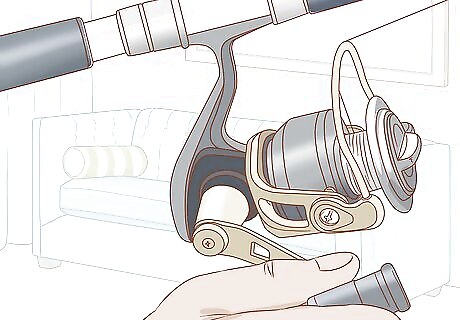
Fill the spool until it is ⁄8 in (0.32 cm) away from the rim. This will give you plenty of line to use, even if you have to cut off a large piece of the line while changing lures or clearing snags, without overloading your reel. Never fill the spool to the very edge. Under filling or overloading the spool will cause tangles and problems with casting.
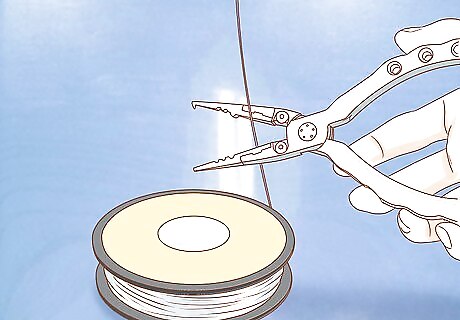
Use line cutters to cut the line close to the supply spool. Leave a small amount of excess line to secure its free end with a lure. After cutting the line you can also place a small piece of tape over the free end on the spool to prevent it from coming unraveled. You can use scissors if you do not have line cutters.
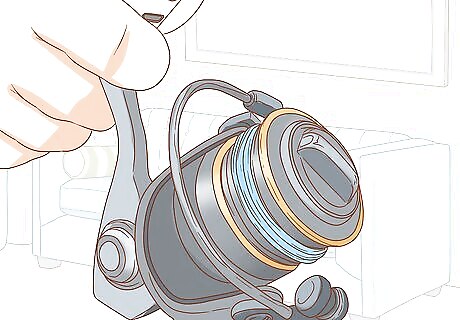
Secure the line on the spool. You can use a lure, swivel, or a clip to secure the free end of your line. This will prevent the line from slipping through the guides. You can also wrap a rubber band around the spool. If your spool comes with a tab in it, you can also tie the end of the line around the tab.


















Comments
0 comment